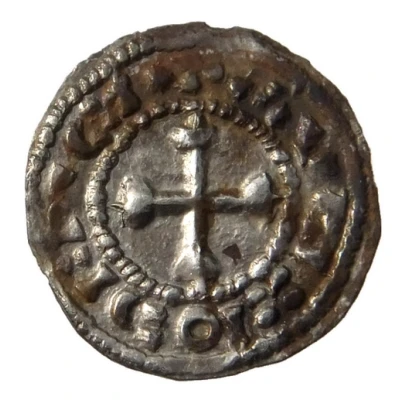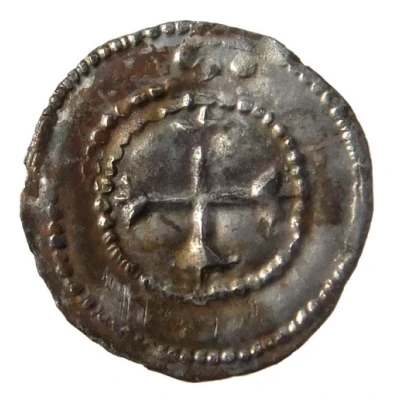


© Quiquengrogne
Obol anonymous AVTSIODER CI ND
| Silver | 0.7 g | 17 mm |
| Issuer | County of Auxerre (French States) |
|---|---|
| Type | Standard circulation coin |
| Years | 900-1150 |
| Value | 1 Obol (1⁄480) |
| Currency | Livre tournois |
| Composition | Silver |
| Weight | 0.7 g |
| Diameter | 17 mm |
| Shape | Round (irregular) |
| Technique | Hammered |
| Orientation | Variable alignment ↺ |
| Demonetized | Yes |
| Updated | 2024-10-04 |
| Numista | N#67030 |
|---|---|
| Rarity index | 90% |
Reverse
Cross. Three pellets between the two beaded circles.
Comment
The first strikes of this type of coinage are attributed to the Duke of Burgundy, Richard le Justicier (888-921). The good quality of these obols (high silver content) and the fine shape of their crosses date them to the early 10th century.The shape of the cross evolved through the eleventh and early twelfth centuries, becoming thicker and thicker. The diameter diminished, as did the weight and silver content of the coin, which became a billon.
Interesting fact
One interesting fact about this coin is that it was used as a form of currency in the County of Auxerre, which was a region in medieval France, during the 10th to 12th centuries. Despite being made of silver, the coin was relatively small in weight, weighing only 0.7 grams. This suggests that the coin may have been used for small transactions or as a token of exchange, rather than as a large denomination coin.